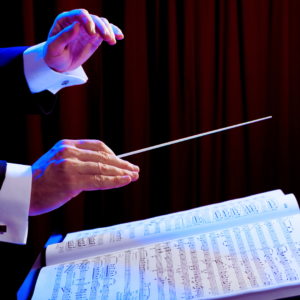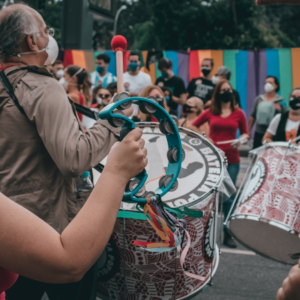The landscape of modern art has undergone significant transformations since the late 19th century, reflecting shifts in culture and society. The evolution of modern art movements represents a continuous dialogue between artists and the changing world around them. Each movement, from Impressionism to Abstract Expressionism, showcases artists’ responses to contemporary life and their quest for new forms of expression.
As societies evolved, so did the themes and styles of art. The impact of historical events, technological advancements, and social changes has been pivotal in shaping the direction of modern art. Artists became increasingly aware of their role in commenting on or challenging the cultural norms of their time, leading to innovations that broke away from traditional aesthetics.
Exploring these movements reveals not only the progression of artistic techniques but also the broader cultural narratives that influenced them. Understanding how modern art reflects the complexities of its era enhances appreciation for its significance in art history. Each movement serves as a reflection of the time, inviting viewers to engage with the art on a deeper level.
Origins and Historical Development
The trajectory of modern art is marked by significant changes influenced by cultural, social, and technological advancements. Key movements like the Renaissance, Baroque, and Realism laid the groundwork for the rise of avant-garde movements in the 19th century.
From Renaissance to Realism
The Renaissance sparked a rebirth of classical ideals and humanism in the 14th to 17th centuries. Artists like Leonardo da Vinci and Michelangelo emphasized realism and the human figure. Techniques such as perspective and chiaroscuro transformed how space and light were represented.
Baroque art followed, characterized by dramatic expression and grandeur. Artists like Caravaggio utilized intense contrasts and dynamic compositions to evoke emotional responses. Classicism re-emerged during this period, emphasizing harmony and proportion.
The 19th century saw the emergence of Realism, which focused on everyday life and ordinary subjects. Artists such as Gustave Courbet rejected romanticism’s idealism, portraying the working class and social issues. This realistic approach moved art closer to representing the actual world.
Rise of the Avant-Garde
The Industrial Revolution catalyzed a shift in artistic expression. This era brought rapid technological changes and urbanization, leading to new perspectives and challenges in society. Artists began to question traditional norms, paving the way for avant-garde movements.
In the late 19th century, movements like Impressionism emerged, with artists such as Claude Monet exploring light and color using loose brushwork. This departure from realism influenced future movements, including Post-Impressionism and Fauvism.
As artists sought to break boundaries, they experimented with abstraction and new materials. The avant-garde encouraged radical ideas and forms, leading to a diverse array of styles that defined modern art’s evolution.
Pivotal Modern Art Movements
Modern art movements emerged as a response to the changing social, political, and technological landscapes of the late 19th and early 20th centuries. They challenged traditional artistic conventions and sought new forms of expression, leading to groundbreaking developments in aesthetics and technique.
Impressionism and Post-Impressionism
Impressionism originated in the 1860s, characterized by loose brushwork and an emphasis on light and its changing qualities. Artists like Claude Monet, Edgar Degas, and Gustave Courbet focused on everyday subjects, often painting en plein air.
Post-Impressionism followed in the late 19th century, pushing boundaries further. Artists such as Vincent van Gogh and Paul Gauguin sought to express emotional depth and symbolism. They moved beyond mere representation, incorporating vivid colors and dynamic forms, paving the way for modern expressive styles.
Expressionism and Fauvism
Expressionism emerged in the early 20th century, aiming to convey emotional experience over physical reality. Artists like Edvard Munch and Wassily Kandinsky expressed anxiety and despair, with distorted forms and bold colors focusing on subjective feelings.
Fauvism, led by figures like Henri Matisse, emphasized strong color and painterly qualities. The term “Fauvism” comes from the French word for “wild beasts.” This movement showcased color as an emotional force, often in radical experimentation with hue and brushwork, influencing subsequent modern art.
Cubism and Abstract Art
Cubism, co-developed by Pablo Picasso and Georges Braque, revolutionized representation in art. Emerging in the early 1900s, it broke subjects into geometric shapes, offering multiple perspectives simultaneously. This deconstruction of form challenged viewers’ perceptions of space and time.
Abstract art followed, moving further from objective representation. It focused on the elements of art, such as color, line, and shape, without direct reference to the real world. Artists explored non-representational forms, leading to the rise of movements like Abstract Expressionism and prompting discussions about the essence of art itself.
Surrealism and Dada
Surrealism arose in the 1920s, emphasizing the unconscious and dreams. Artists like Salvador Dalí and Max Ernst sought to express the irrational, often using bizarre imagery and unexpected juxtapositions. This movement framed art as a pathway to explore deeper psychological realities.
Dada, a reaction to World War I, rejected traditional aesthetics and embraced absurdity. The movement questioned the very definition of art through anti-art actions and works. Artists such as Marcel Duchamp employed ready-made objects, challenging the notion of artistic creativity and the purpose of art in society.
Evolution of Artistic Expression
Artistic expression has undergone significant transformations throughout the 20th century, reflecting broader cultural shifts and innovations in technique and material. Key movements such as Abstract Expressionism, Pop Art, and Minimalism have redefined the boundaries of art.
Abstract Expressionism and Color Field Painting
Abstract Expressionism emerged in the 1940s and 1950s, emphasizing spontaneous, automatic, or subconscious creation. Artists like Jackson Pollock and Willem de Kooning used bold brushstrokes and energetic forms. This movement prioritized individual expression over representation, allowing emotions and the subconscious to guide the artwork’s creation.
Color Field Painting, a subset of Abstract Expressionism, focuses on large areas of color to evoke emotional responses. Mark Rothko is noted for his meditative, luminous color compositions. The simplicity in form and depth of color invited viewers to experience art on a sensory level, moving away from representational forms.
Pop Art and Conceptual Movements
Pop Art emerged in the 1960s as a reaction to the dominance of Abstract Expressionism and sought to blur the lines between high and low culture. Artists like Andy Warhol and Roy Lichtenstein integrated commercial imagery and popular culture into their work, employing techniques like screen printing and comic strip styles. This movement celebrated consumerism, reflecting society’s increasing fascination with mass media.
Conceptual Art challenged traditional notions of art, emphasizing ideas over aesthetics. Artists like Sol LeWitt showcased that the concept behind the work is more important than its physical form. This movement paved the way for diverse practices, including performance art and installations, underscoring the significance of the viewer’s interpretation.
Minimalism and Postmodern Diversity
Minimalism developed in the late 1950s as a reaction against the emotionalism of Abstract Expressionism. Artists sought to strip down form to its essentials, emphasizing simplicity and objectivity. Works often consisted of geometric shapes and monochromatic palettes.
Postmodern art, emerging in the late 20th century, expanded the definition of art. It embraced diversity in media, incorporating digital art and complex installations. This era of artistic expression reflects a wide range of voices and perspectives, allowing contemporary artists to explore identity, narrative, and cultural critique.
Art in the Modern Context
Modern art is shaped significantly by technological advancements and a global perspective. These elements have transformed artistic expression, allowing for diverse forms and varied influences in contemporary practices.
Influence of Technology and New Media
New technologies have revolutionized artistic practices. Digital tools have enabled artists to explore installation art and multimedia projects, pushing the boundaries of traditional forms.
Photography’s evolution has also affected modern art, offering new ways to capture and manipulate images. This medium sparked movements like social realism, emphasizing real-life experiences and social issues.
Artists now utilize virtual reality and digital platforms, engaging with audiences in ways that were previously unattainable. The integration of technology has fostered creativity and innovation while allowing artists to critique modern life.
Global Perspective and Cross-Cultural Exchange
Global culture plays a crucial role in shaping contemporary art. Artists today draw inspiration from various traditions, leading to hybrid forms that reflect a worldwide dialogue.
Female artists have increasingly gained prominence, bringing diverse perspectives that challenge established norms. Their work often combines personal narratives with broader social themes.
Cross-cultural exchange has facilitated the exploration of identity while encouraging collaboration across borders. Creative practices are enriched through this interconnectedness, resulting in a vibrant tapestry of artistic expression globally.





